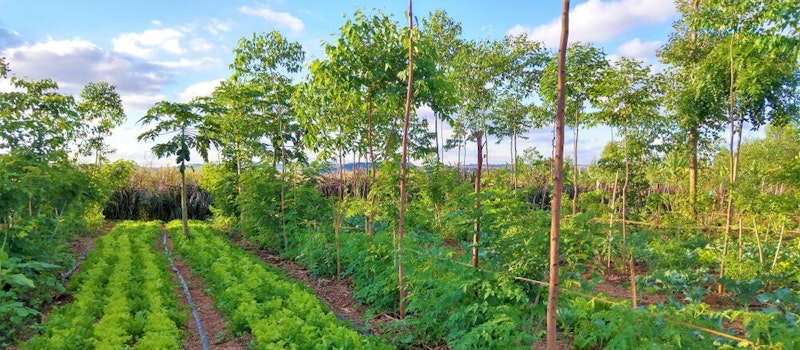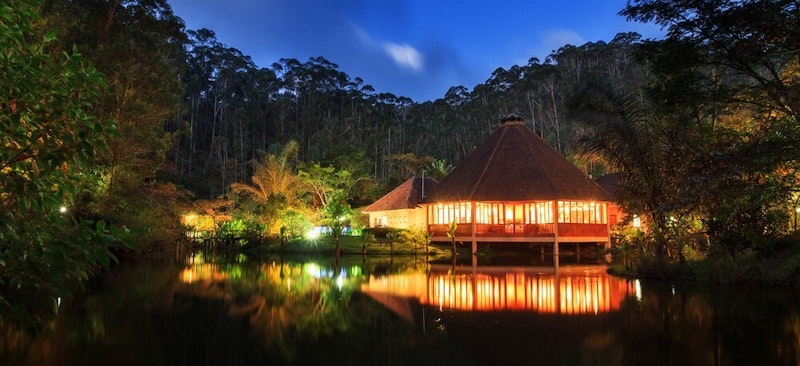Study Notes
GCSE Geography | Rainforest Management: Local Level (Tropical Rainforests 10)
- Level:
- GCSE
- Board:
- AQA, Edexcel, OCR, Eduqas
Last updated 17 Oct 2024
Local level actions are at the heart of sustainable rainforest management.
For example the environment and local cultures and traditions need to be understood and respected; traditional skills and knowledge should be embraced; local communities should be at the centre of decision-making - it is their land so they should be able to control it and use it to generate income for them and their families; and appropriate technology should be used, choosing machinery and equipment that doesn't cost huge amounts of money and can be maintained easily by local communities.
Small-scale forestry
There are three small-scale forestry techniques that help to manage the tropical rainforest in a sustainable way.
- Selective logging - this technique involves only felling fully grown trees – as these are seen as less valuable ecologically, and so younger trees can be allowed to mature and continue to provide protection from soil erosion (by binding the soil together with roots and providing leaf litter to help nutrient cycling). The selective logging cycle lasts between 30 and 40 years - meaning that trees cannot be felled until they are at least 30 years old.
- Agroforestry - this technique involves growing crops and trees together. Farmers grow crops in carefully controlled, cleared areas within the rainforest, surrounded by plantations of trees. Annual food crops and tree-crops such as coconuts are planted. Agroforestry can control runoff and soil erosion, thereby reducing losses of water, soil material, organic matter and nutrients.
- Replanting - this technique recreates forest cover that has been lost that is almost the same as the original forest. Seeds are collected from the remaining patches of the original forest. These seeds are then planted in nurseries so they can grow into saplings, and once the saplings are strong enough they can be planted back into areas that have been deforested, where they will eventually grow into full size trees, with almost the same DNA as the original forest cover.
In addition to this regional governments are clamping down to stop illegal logging. This is challenging due to the remoteness of parts of the rainforest, meaning that illegal logging can easily take place unnoticed, and it is happening on a large scale in tropical rainforests across the globe. By using satellites and drones governments are able to monitor this more closely and prosecute those caught illegally felling trees.

Ecotourism
Many countries with tropical rainforests have promoted their forests for eco-tourism, with scenery, wildlife, remoteness and culture being the main attractions. Countries that have embraced ecotourism include Brazil, Costa Rica and Belize. The purpose of ecotourism is to educate visitors to give them a better appreciation and understanding of wildlife and local cultures, which will benefit local communities and protect the environment for the future.
Ecotourism is small-scale tourism and entirely local - it is organised and run by local people, creates jobs for local people, and only uses local produce - therefore all of the profits stay in the local community and there is no economic leakage which is usually an issue with tourism in developing nations. The money generated by ecotourism is invested back into conservation projects that retain and protect the rainforest trees, which benefits the government and local people. This is a more sustainable option than cutting them down for short-term profit.

Creating bio-reserves
Some areas of the rainforest are left untouched except for being used for plant breeding and scientific research. At the centre there is a core area which is surrounded by a buffer zone - inside this only certain activities are allowed, and these have to cause minimal environmental damage. Sometimes lodges are built close by to enable tourists to stay there and learn about the environment.
Reducing the damage from mineral extraction
Mining is extremely damaging to tropical rainforests. One way of reducing the damage is to remove a layer of top soil and ash (from burnt timber) and store this whilst mineral extraction is taking place. Once the minerals have been removed mining companies can replace the earth, and then cover it with the stored top soil and ash, which should be fertile, before replanting the land with native tree species as a form of reforestation.
You might also like
Amazonian national park set to be extended
24th February 2018
Madagascar's rainforests at risk
22nd April 2018
Palm Oil's threat to primates
14th August 2018